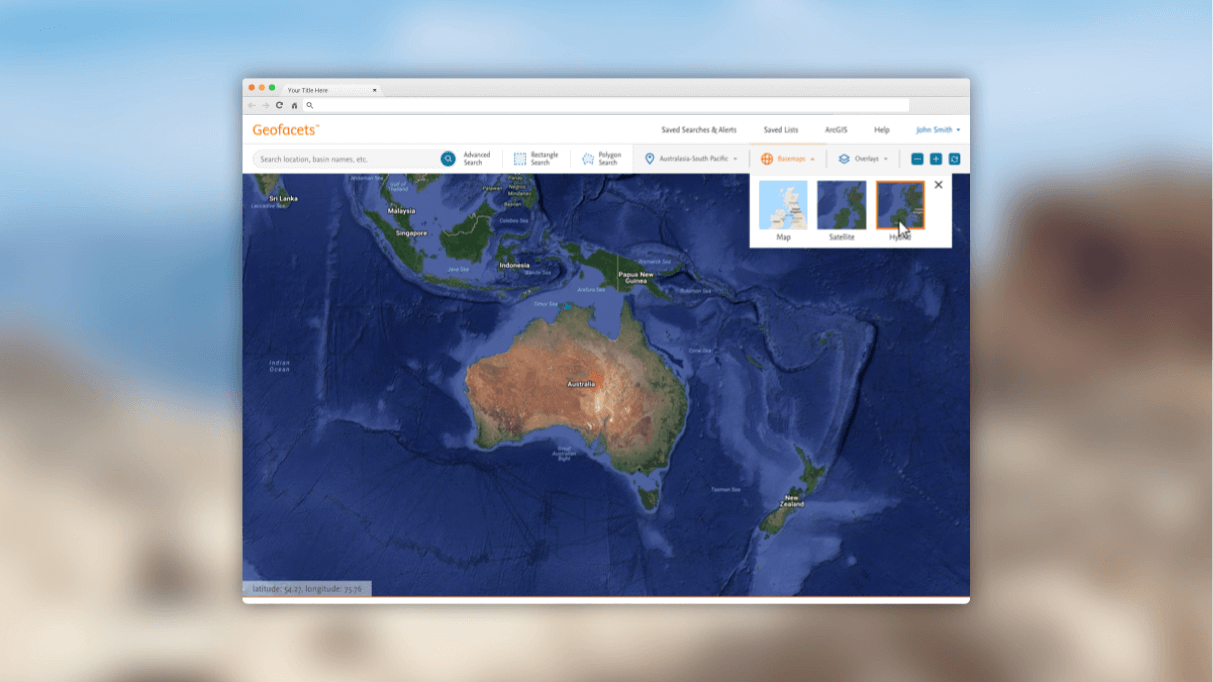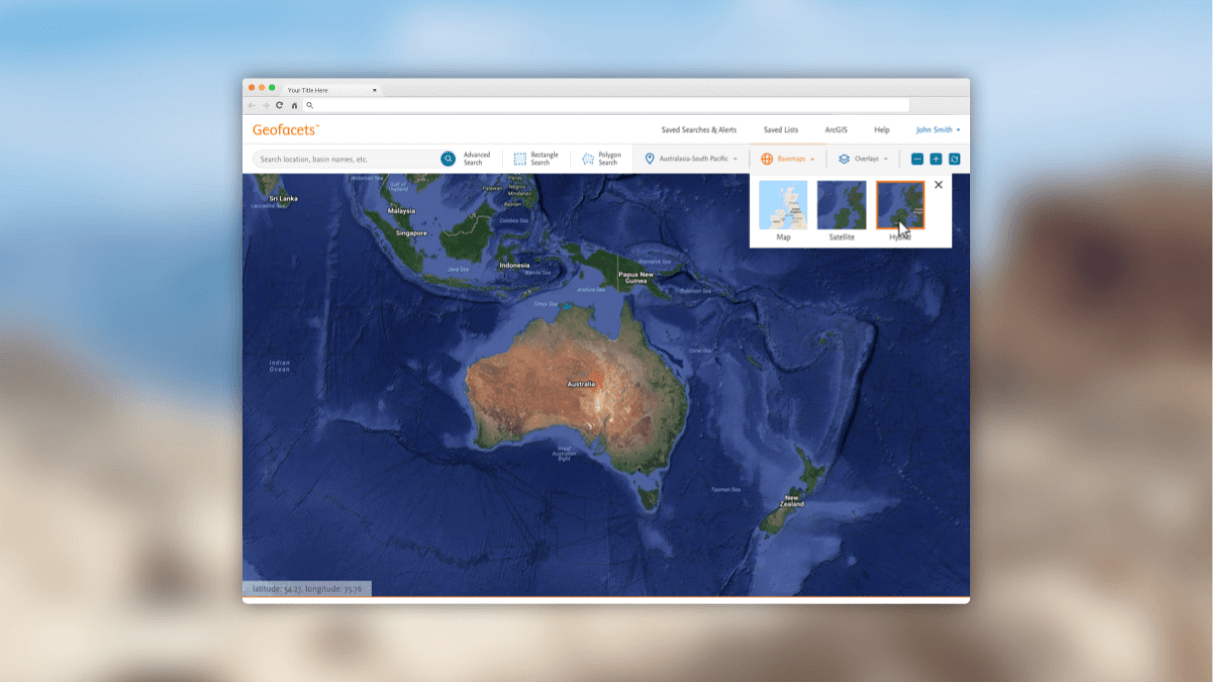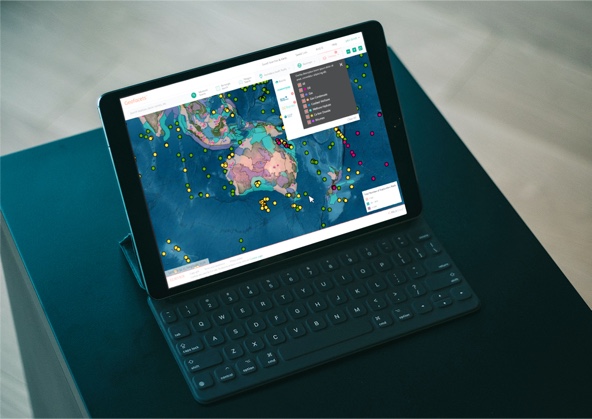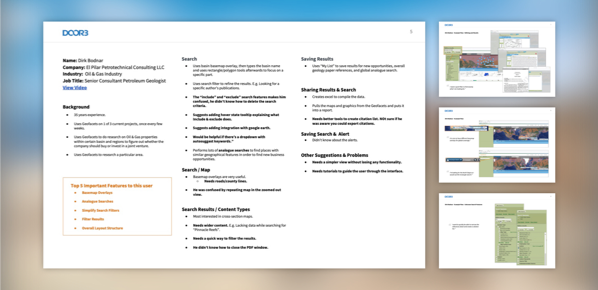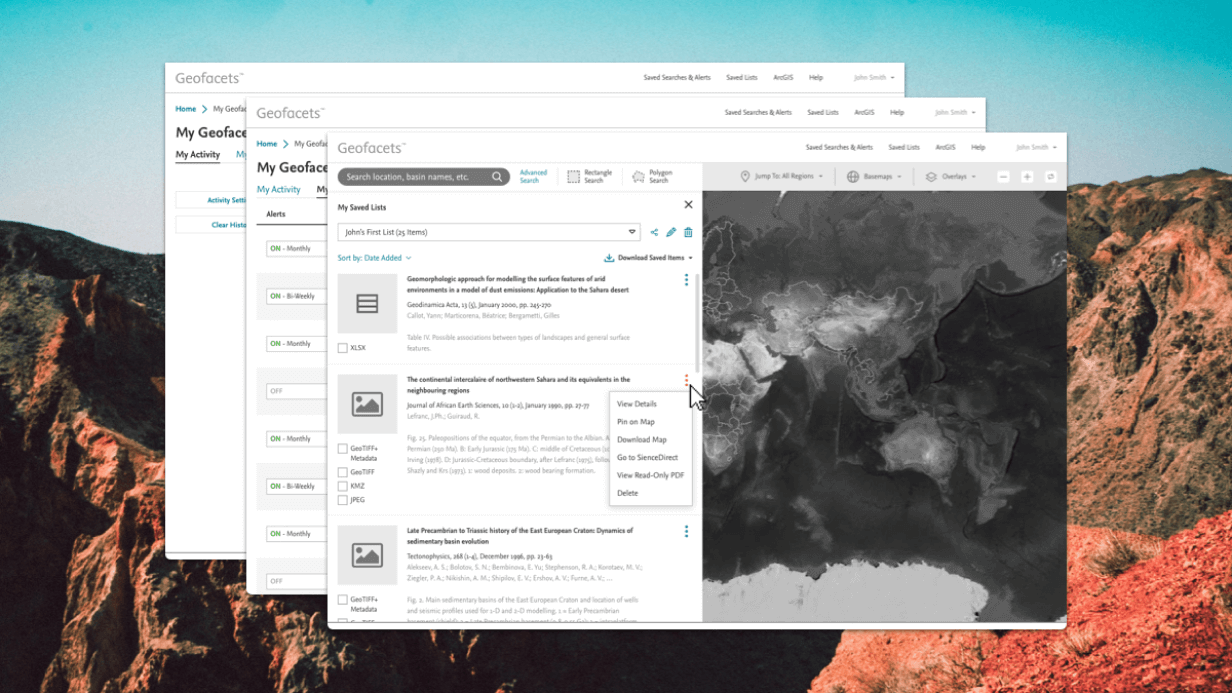We identify business goals, understand users and competitors, prioritize features.
The target user groups range from geoscientists to academics and executives, with primary users being geoscientists, who work in regional teams during exploration and development. For ideation purposes, the team analyzed competitors across domains to understand their strengths and weaknesses for specific features. Based on these analyses, we categorized the features from highest to lowest priority to further discuss with the users.
We give specific feature improvements and suggestions based on in-depth user interviews, create wireframes for review and iteration.
To understand the needs and wants of our target audiences, we conducted in-depth, one-on-one user interviews. We then summarized details for improvements within several major areas, including global overall structure and header bar, search, search with map and search results, etc.
As a next step, we created low-fidelity wireframes to describe a maximum of 5 prioritized features for review and iteration with the client stakeholder team.

